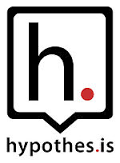Knight Foundation
See the following -
"Open Humans" Launches Online Platform to Share DNA and other Medical Data
A group of top university scientists just launched a project to build a community of researchers and participants who want to benefit medical progress – by using technology to open up health data. The “Open Humans Network,” created by researchers from Harvard, New York University and the University of California San Diego, is backed by a $1 million investment from the John S. and James L. Knight Foundation and the Robert Wood Johnson Foundation, each of which contributed $500,000 in separate grants.
- Login to post comments
8 Clever Ideas For Making Government Work Better With Data
How can we make the places we live more awesome through data? Read More »
- Login to post comments
Applications Now Open For 2014 OpenNews Fellowships
Today we’re proud to announce the start of the 2014 Knight-Mozilla OpenNews Fellow application process. Read More »
- Login to post comments
Are We Finally Ready To Annotate The Entire Internet?
 Comments sections are increasingly useless and nasty. Hypothes.is thinks it has a better way to make the Internet more democratic...Larry Hanley, an English professor at San Francisco State University, is the kind of man who aggressively annotates his books. He believes a particularly beautiful verse of poetry deserves to be underlined; a thought-provoking line of prose requires an equally intelligent comment scribbled next to it. In his classroom, he gently nudges his students to engage with books by writing notes in the margins.
Comments sections are increasingly useless and nasty. Hypothes.is thinks it has a better way to make the Internet more democratic...Larry Hanley, an English professor at San Francisco State University, is the kind of man who aggressively annotates his books. He believes a particularly beautiful verse of poetry deserves to be underlined; a thought-provoking line of prose requires an equally intelligent comment scribbled next to it. In his classroom, he gently nudges his students to engage with books by writing notes in the margins.
- Login to post comments
Open Humans Project Allows Volunteers to Share Their Personal Health Data
While many researchers encounter no privacy-based barriers to releasing data, those working with human participants, such as doctors, psychologists, and geneticists, have a difficult problem to surmount...A new project, Open Humans, seeks to resolve the issue by finding patients who are willing—even eager—to share their personal data. Read More »
- Login to post comments
Open Source for Humanitarian Action
In the days following the Jan. 10, 2010, earthquake in Haiti, chaos prevailed. Transportation was limited, if not impossible. Lines of communication were broken. A few radio stations continued to broadcast, but the disaster’s scale was overwhelming. Only one form of mass communication remained relatively intact: cellular phones. Even before the disaster, there had been only 108,000 landbased telephone lines in the country, compared with 3.5 million mobile phones. After the earthquake, mobile communications, particularly text messages, were one of the few means by which people could report their needs and location...
- Login to post comments